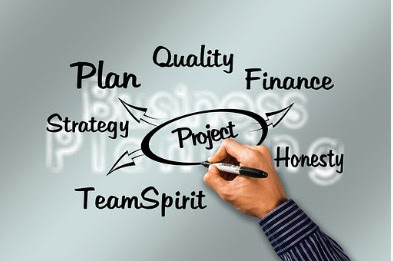 |
| Empirical Process |
In the script, decisions are taken based on observation and
experiment rather than detailed upfront planning.
Empirical Process control depends on three main ideas of transparency,
observation and adaptation.
- - Transparency
Transparency allows any aspect of any scramble to be
observed by anyone in the Empirical
Process. This encourages easy and transparent flow of information across
the organization and creates an open work culture. In the script, transparency
is displayed by:
- Artifacts
- Project Vision Statement
- Preferred Product Backlog
- Schedule planning schedule
- Meetings
- Sprint Review Meetings
- Daily Standup Meetings
- Information Radiators
- Burndown chart
- Scrum board
- -
Inspection
Empirical Process Scroll
inspection is shown as:
- Use common Scrum board and other information
radiators
- Create feedback, purchase of feedback from
customers and other stakeholders during the development epic (s), the
promotional production backlog and the conduct publication planning process.
- Deliverables check and approval by validating
and approving the Sprint process by product owners and customers.
-
- Adaptation
Scrum core teams and stack holders learn through
transparency and inspection, and then they are adapted as they adapt by
improving the work they do. Adaptation in Scroll is displayed by:
- Standout Meetings
- Persistent risk identification
- Change Requests
- Scroll guide body
- Retrospect Sprint Meeting
- Retrospect Project Meeting
Empirical Process control is a core scream theory, and it separates from
other clever structures.
 |
| Empirical Process |
The script manual
puts it well: There is no process or technique to create scrum production; rather,
it is a structure in which you can use different processes and techniques. The
scroll specifies the effectiveness of your product management and development
principles so that you can improve.
With the meaning Empirical
Process control, we do not fix the scope of the product and do not fix the
process of how to make it. Instead, in a short cycle, we make a small shipments
of the product, inspect how we make it, how we make it, and to create a clear
inspection of how to make and how to make the product, with mechanisms
Why is the script based on empirical process control? Because the intermediary under Scrum is
that production development is very complex - and a big difference between
product groups - for the extended set of "ready" defined process
sources.
The Development World often strives to succeed in highly
defined process recipes; it deals with complex domains, such as it is a simple
decision-making method. They never work, but there will always be people who
say, "Ah, you have not worked hard enough." And there will always be
people who say, "Ah, you just did not find the right elaborate process
formula and tools." And it is an endless cycle of adoption of fades (often
purchased from some vendors), leaving fades and then adopting new ideas. Leads
to
Contrary to the detailed definition process, Scroll emphasizes
theories like transparency and self-management teams to support Empirical Process Control.
At the same time, it helps to start small groups in
connection with some simple, direct, adaptive structure to understand these
principles. These concrete theories of Scrum give an initial point to adopt its
deeper theories. A perfect balance.
In other words, to create a transparency, observation and
adaptation cycle for a group, the "just enough process" is required
in the heart of Empirical Process control.
Being a large scalp (low) skull, it achieves equal balance
for single-team scrip for large production groups. It adds a little more
concrete structure - the Les rules-to-scrum, whose purpose is to maintain
transparency and emphasize the observation cycle, so groups can continually
improve their work path. These stereotypes and structures make it easy to get
started, but deliberately 'incomplete' so that groups have a place to adapt to
complex domains like great migration and development.




